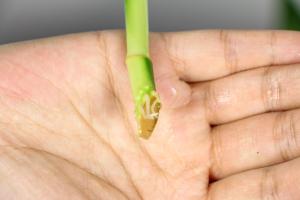Introduction
Plants require water to survive and grow. However, different amounts of water can affect plant growth in various ways. In this article, we will explore how plant growth is affected by different amounts of water and why it is important to provide plants with an adequate amount of water.
Effect of Overwatering on Plant Growth
Overwatering plants can lead to poor growth and even death. When a plant is overwatered, the soil becomes waterlogged, which leads to reduced oxygen levels in the soil. This, in turn, can cause the roots to suffocate and rot, which ultimately affects the plant's ability to uptake water and nutrients. Overwatering can also promote the growth of harmful bacteria and fungi in the soil, which can cause diseases.
Effect of Underwatering on Plant Growth
Underwatering plants can also have negative effects on plant growth. When a plant lacks water, it begins to conserve the limited water it has by reducing photosynthesis and slowing down growth. This can lead to stunted growth, smaller leaves, and poor overall plant health. Additionally, underwatering can cause plant wilting and eventually lead to plant death.
Optimal Watering Conditions for Plant Growth
The optimal watering conditions for plant growth can vary depending on the plant species, soil type, and environment. Generally, plants should be watered when the top inch of soil is dry. This ensures that the roots have access to water and oxygen, without being waterlogged. Additionally, plants should be watered deeply but infrequently, rather than receiving multiple shallow waterings. This encourages the roots to grow deeper into the soil in search of water and nutrients, which ultimately strengthens the plant's overall structure and health.
Effect of Different Watering Amounts on Specific Plants
Different types of plants require different amounts of water to grow optimally. For instance, succulent plants are adapted to dry environments and need less water than other types of plants. On the other hand, plants like ferns require more moisture to thrive. It is important to research the specific watering needs of the plants you are growing to ensure they receive the right amount of water to grow optimally.
Conclusion
Water is essential for plant growth, but it is crucial to provide plants with the right amount of water to promote optimal growth and health. Overwatering and underwatering can both have negative effects on plant growth, and the optimal watering conditions can vary depending on the plant species and environment. By understanding how different amounts of water affect plant growth, we can ensure that our plants receive the care they need to grow and thrive.

 how many times do yo...
how many times do yo... how many planted tre...
how many planted tre... how many pine trees ...
how many pine trees ... how many pecan trees...
how many pecan trees... how many plants comp...
how many plants comp... how many plants can ...
how many plants can ... how many plants and ...
how many plants and ... how many pepper plan...
how many pepper plan...































